Potrebujeme váš súhlas na využitie jednotlivých dát, aby sa vám okrem iného mohli ukazovať informácie týkajúce sa vašich záujmov. Súhlas udelíte kliknutím na tlačidlo „OK“.
ASTM A800/A800M-14
Standard Practice for Steel Casting, Austenitic Alloy, Estimating Ferrite Content Thereof
Automaticky preložený názov:
Štandardné praktiky pre odlievanie ocele, austenitické zliatiny, odhadovať feritové jeho obsah
NORMA vydaná dňa 1.5.2014
Informácie o norme:
Označenie normy: ASTM A800/A800M-14
Poznámka: NEPLATNÁ
Dátum vydania normy: 1.5.2014
Kód tovaru: NS-4294
Počet strán: 7
Približná hmotnosť: 21 g (0.05 libier)
Krajina: Americká technická norma
Kategória: Technické normy ASTM
Kategórie - podobné normy:
Anotácia textu normy ASTM A800/A800M-14 :
Keywords:
austenite, austenitic stainless steel, ferrite, Schoefer Diagram, steel castings, ICS Number Code 77.140.80 (Iron and steel castings)
Doplňujúce informácie
| Significance and Use | ||||||||||||||||||||||
|
4.1 The tensile and impact properties, the weldability, and the corrosion resistance of iron-chromium-nickel alloy castings may be influenced beneficially or detrimentally by the ratio of the amount of ferrite to the amount of austenite in the microstructure. The ferrite content may be limited by purchase order requirements or by the design construction codes governing the equipment in which the castings will be used. The quantity of ferrite in the structure is fundamentally a function of the chemical composition of the alloy and its thermal history. Because of segregation, the chemical composition, and, therefore, the ferrite content, may differ from point to point on a casting. Determination of the ferrite content by 4.1.1 In Determinations from Chemical Composition—Deviations from the actual quantity of each element present in an alloy because of chemical analysis variance, although possibly minor in each case, can result in substantial difference in the ratio of total ferrite-promoting to total austenite-promoting elements. Therefore, the precision of the ferrite content estimated from chemical composition depends on the accuracy of the chemical analysis procedure. 4.1.2 In Determinations from Magnetic Response—Phases other than ferrite and austenite may be formed at certain temperatures and persist at room temperature. These may so alter the magnetic response of the alloy that the indicated ferrite content is quite different from that of the same chemical composition that has undergone different thermal treatment. Also, because the magnets or probes of the various measuring instruments are small, different degrees of surface roughness or surface curvature will vary the magnetic linkage with the material being measured. 4.1.3 In Determinations from Metallographic Examination—Metallographic point count estimates of ferrite percentage may vary with the etching technique used for identification of the ferrite phase and with the number of grid points chosen for the examination, as explained in Test Method E562. 4.2 The estimation of ferrite percent by chemical composition offers the most useful and most common method of ferrite control during melting of the metal. 4.3 For most accurate estimate of ferrite percent, a quantitative metallographic method should be used. |
||||||||||||||||||||||
| 1. Scope | ||||||||||||||||||||||
|
1.1 This practice covers procedures and definitions for estimating ferrite content in certain grades of austenitic iron-chromium-nickel alloy castings that have compositions balanced to create the formation of ferrite as a second phase in amounts controlled to be within specified limits. Methods are described for estimating ferrite content by chemical, magnetic, and metallographic means. 1.2 The grades covered by this practice are: CF-3, CF-3A, CF-8, CF-8A, CF-3M, CF-3MA, CF-8M, CF-8C, CG-8M, and CH-10. 1.3 The values stated in either inch-pound units or SI units are to be regarded separately as standard. The values stated in each system are not exact equivalents; therefore, each system must be used independently of the other. Combining values from the two systems may result in nonconformance with the practice. 1.3.1 Within the text, the SI units are shown in brackets. 1.4 This standard does not purport to address the safety concerns, if any, associated with its use. It is the responsibility of the user of this standard to establish appropriate safety and health practices and determine the applicability of regulatory limitations prior to use. |
||||||||||||||||||||||
| 2. Referenced Documents | ||||||||||||||||||||||
|
Podobné normy:
Historická
15.10.2011
Historická
1.5.2014
Historická
1.3.2012
Historická
1.10.2011
Historická
1.7.2011
Historická
1.10.2013
Odporúčame:
EviZak - všetky zákony vrátane ich evidencie na jednom mieste
Poskytovanie aktuálnych informácií o legislatívnych predpisoch vyhlásených v Zbierke zákonov od roku 1945.
Aktualizácia 2x v mesiaci !
Chcete vedieť viac informácii ? Pozrite sa na túto stránku.


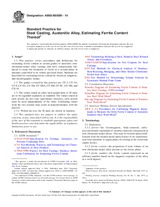
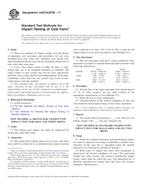 ASTM A327/A327M-11..
ASTM A327/A327M-11.. ASTM A351/A351M-14..
ASTM A351/A351M-14..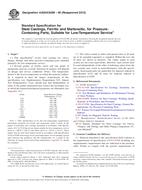 ASTM A352/A352M-06(2..
ASTM A352/A352M-06(2..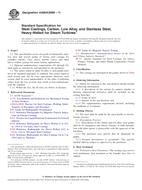 ASTM A356/A356M-11..
ASTM A356/A356M-11.. ASTM A367-11
ASTM A367-11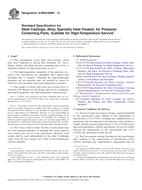 ASTM A389/A389M-13..
ASTM A389/A389M-13..
 Cookies
Cookies
